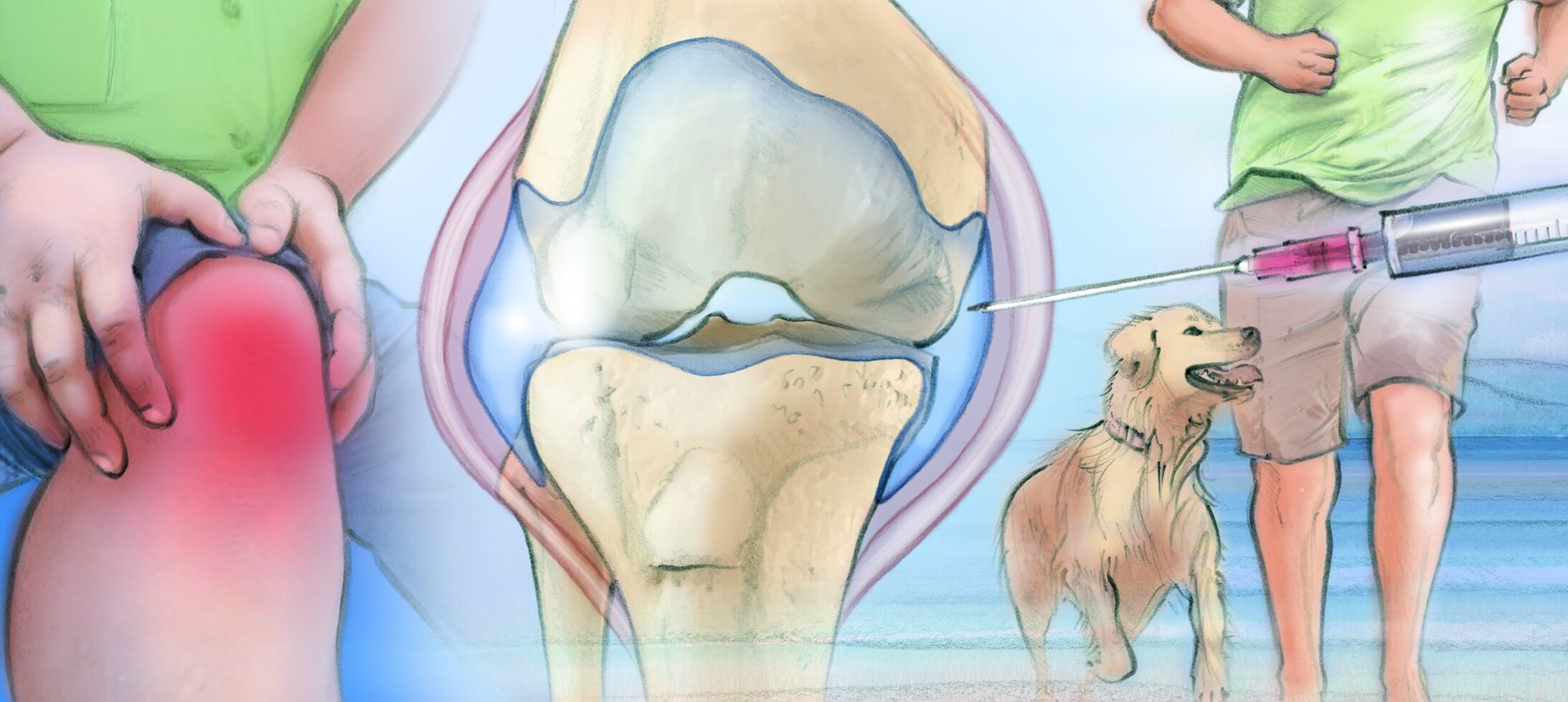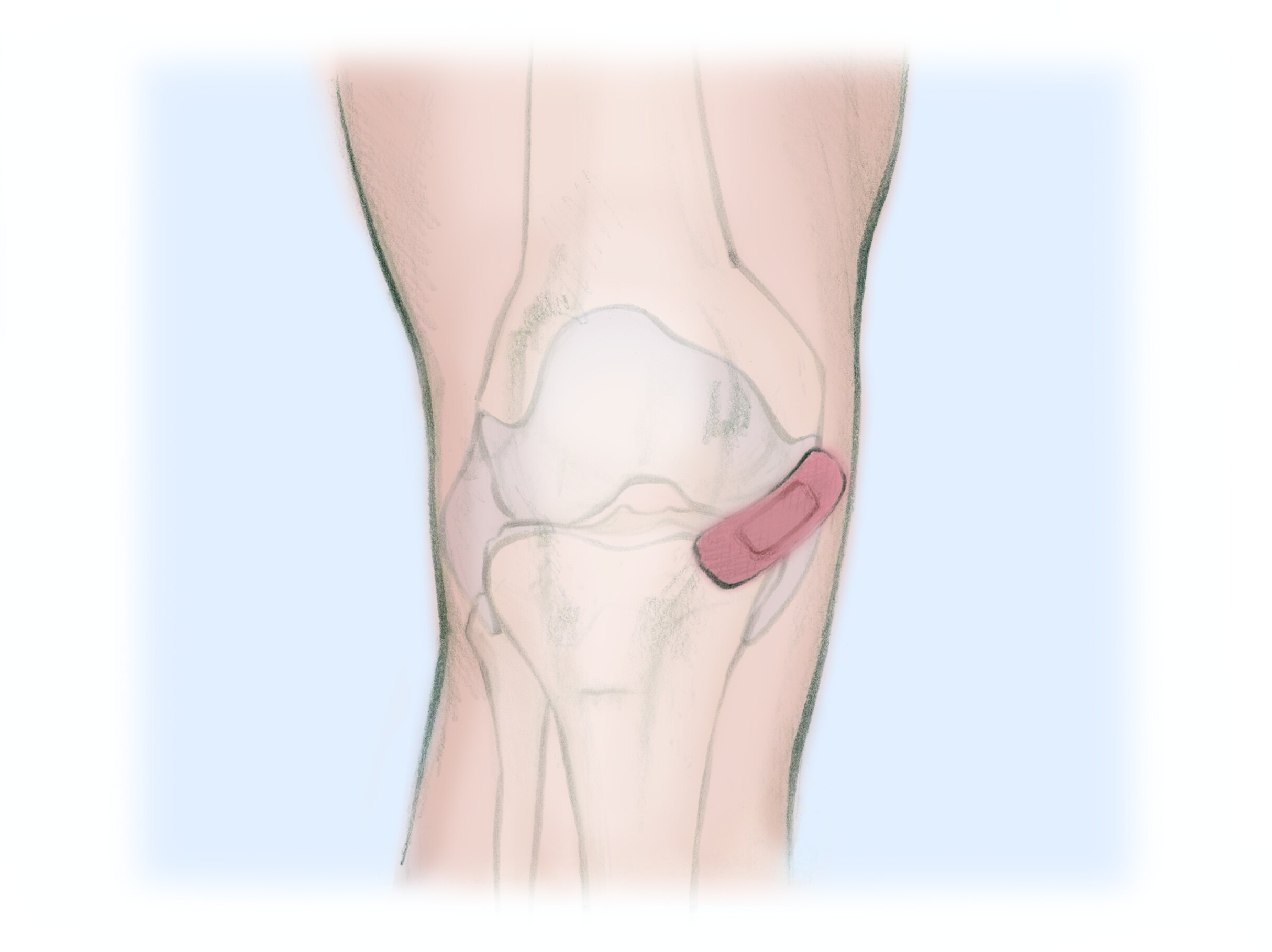What is a Joint or Spine Injection?
A clinician can inject medicine into a joint or into the spine to reduce pain and inflammation. They often inject numbing medicine and a steroid. These injections can treat arthritis or pinched nerves in the spine.
How is a Joint or Spine Injection done?
The clinician first cleans and numbs the skin. They use x-rays or ultrasound to guide them as they place a skinny needle through the numbed skin into the joint or the area around the pinched nerve. They may inject dye to confirm they are in the joint. They will then inject the medicine into the right spot in the joint or around the nerve.
Joint Injection
1. The clinician numbs the skin over the area to be treated.
2. They use x-rays or ultrasound to put a skinny needle into the joint. They inject medicines that reduce pain and inflammation over days.
3. They remove the needle and apply a bandage over the pinhole in the skin.
What are the risks?
Joint and spine injections are generally very safe procedures when done by a specialist.
1-2 in 10,000 people develop infection
2 in 100,000 people experience bleeding
3 in 100,000 people have an allergic reaction to the dye (if used)
Repeated steroid injections may be linked to weakening tendons or cartilage in the joint. The steroid can also cause discoloration of the skin or hormone effects, such as skin flushing, hair growth, irregular periods, or changes in breastfeeding.
What are the alternatives?
Your options will depend upon your specific health issues and preferences. Your clinician will be able to help you explore your options, including a combination of the treatments below.
Alternative 1 Physical therapy. Some joint or back pain can be treated with physical therapy by strengthening muscles and reducing scar tissue.
Alternative 2 Chiropractic adjustments have been shown to be effective for some causes of low back and joint pain. However, some adjustments such as those for neck pain can be dangerous.
Alternative 3 Acupuncture. Some people are able to reduce their joint or back pain with acupuncture.
Alternative 4 Surgery such as joint replacement or back surgery. Often joint injections are tried first to avoid doing surgery, which has more risks.
Frequently asked questions
Iʼm having leg pain but my doctor is worried about my back. Why?
You might be having pain that goes through your arm to the fingers. You might be having pain in your buttock and down your leg. Why would the problem be coming from your back?
To understand this, we have to talk a little about the spine. The stacked bones of the spine support your body and make it so you can stand up straight, but they also form a hollow tube. Inside this tube are nerves that run between your brain and all the parts of your body.
Every nerve has its own territory to cover. It takes 31 spinal nerves to cover each side of the body.
The nerves travel down neatly arranged paths to all parts of the body. Each nerve has the job of telling the brain what is happening along its path of the body.
If one of these nerves gets pinched inside the spine, you could feel pain or numbness anywhere along the path of the pinched nerve. Thatʼs why it can feel like pain going down the arm or leg.
How does a nerve get pinched?
There is a round, flat connection between most of the stacked bones of the spine. It is called a disc. There are also two small joints just behind each disc. They work together so the spine can bend. As you get older, some of the discs and joints begin to wear down. Parts of them can push out and pinch one of the nerves as it travels down the spine. The nerve can then become swollen and painful.
Do I need surgery for this?
Probably not, but talk to your doctor about it. Most pinched nerves get better on their own. If the pain is severe, or lasts for several weeks, then your doctor may use spinal injections. They can make pinched nerves feel better and they DO NOT need incisions.
You doctor puts a small needle next to the pinched nerve in your back using X-ray or a specialized CT scan and then injects medication.
This medication slowly reduces swelling and takes away pain.
What can I expect during my injection?
You will be treated in a hospital, surgery center or physicianʼs office.
A nurse might put monitoring patches on your body to measure your heart rate, breathing and blood pressure.
You may have an IV placed in your arm.
You will lay on your back, stomach or side, depending on where you need treatment.
Medical imaging will show the doctor exactly where the problem is.
The skin at the treatment site will be cleaned and numbed with medicine.
For some procedures, your doctor may use medication in your IV to help you relax.
The procedure is usually quick and will probably take 5-15 minutes.
What can I expect after my injection?
Plan to stay in recovery for up to an hour.
Your arm or leg may feel numb, heavy or weak for about an hour.
You may notice soreness at the injection site.
Difficulty sleeping, headache or a temporary increase in your pain can be normal. • Pain relief may take 3 to 5 days before you notice it.
What should I do after my injection?
Make sure you have a ride home.
Take it easy for the rest of the day, even if you feel good.
Avoid heavy exercise and listen to your body. If it hurts, donʼt do it!
Make sure you know when your doctor wants to see you back after your injection.
Spinal Pain is an enormous problem in the U.S.
Spinal Pain is the 2nd most common reason for a patient to seek a physician
Third most common reason for surgery
Third most common reason for hospitalization
Billions of dollars spent each year
For more information:
For more information about low back pain:
For more information about degenerative disease of the spine:




